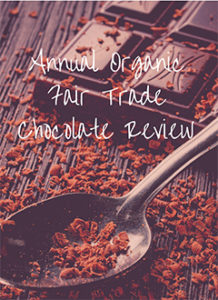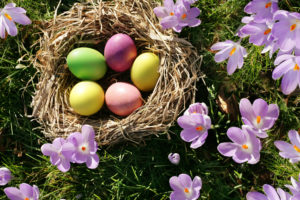
As it turns out, it also presents one of the best opportunities to shift your spending to greener goods. Of the billions of dollars spent on Valentine’s Day gifts every year, more than a third are spent on flowers. As beautiful as they may be, conventionally-grown cut flowers are usually doused with toxic pesticides that are damaging to people as well as the environment.
Don’t miss this important article on the toxic impacts most flowers have on people and the planet.
Solution?
Go organic. If you’re planning to give a bouquet of classic red roses, order organically grown flowers to avoid growing systems that use toxic chemicals. Plenty of businesses, like Organic Bouquet, offer organic roses as well as their conventional assortment.
- Choose flowers and greens grown locally. Your gift will leave a smaller carbon footprint than a bouquet that was flown in from South America or another tropical clime. Visit Local Harvest to locate the flower grower nearest to you.
- Forage your own blooms. Spend your money on a reusable vase rather than throwaway flowers, then fill it with holly branches, red twig dogwood, pine boughs, dried hydrangea blooms, cattails, or whatever else you can find in your yard. Garnish with a re-usable red ribbon.
- Give a potted plant instead of cut flowers. The live plant acts as a mini carbon sink, and will last longer longer than any cut bouquet. Focus on plants that are particularly good at purifying indoor air, like Chinese evergreens, spider plants, and peace lilies.
- Make a basket. Stock a garden basket with an assortment of flower seeds, a trowel, some gardening gloves, and maybe a new pair of clippers. In the spring, help your beloved sow the seeds, then enjoy the blooms all summer long.
- Dish up some bulbs. Fill a shallow bowl with small pebbles; place five or six narcissus bulbs on top. The bulbs will begin to grow as soon as they’re watered; in six weeks, they’ll have sprouted beautiful foliage and fragrant blooms that keep Valentine’s Day alive long past Feb. 14.




 Go organic. If you’re planning to give a bouquet of classic red roses, order organically grown flowers to avoid growing systems that use toxic chemicals. Plenty of businesses, like
Go organic. If you’re planning to give a bouquet of classic red roses, order organically grown flowers to avoid growing systems that use toxic chemicals. Plenty of businesses, like 














7 thoughts on “Six Ways to Green Your Valentine’s Day”
I love the idea of a green plant for Valentine’s Day. Simple and long lasting, just like love!
😉
This is just in time for the hearts day. I really love the tips you have given us. Isn’t it nice to celebrate a green valentines day?
An alternative gift that I really like is planting trees on behalf of your loved one. You can do this with a lot of nonprofits, but my favorite is American Forests, which has ecosystem restoration projects around the world. Chocolates are nice and all, but these trees are a lasting gift, and benefit so much more than just me or you. You can go to http://www.americanforests.org and plant trees in honor of just about anyone. And its only $1 per tree, so its quite affordable.
I love this book! I only wish it was written to make me feel included a bit more because I am a Canadian. Your book is written to Americans (or so it feels). I would have liked to see more Canadian Statistics included and Canadian Companies mentioned and maybe even other countries. Other than that~ What a fabulous wealth of information for those that feel they want to help our world but don’t know where to start. It makes sense that if we all work together we can make changes!!! Thanks for opening my eyes to this fact.
You should write one for teenagers and one for young kids because I think our younger generations are feeling hopeless with all the negative stuff they hear about the world. They need to be inspired as well by someone who can write like you do. It is a book I will keep at my finger tips for constant reference as I change my way of thinking and living!!!
I like your idea of foraging, which is an ideal solution when you have access to a rural setting.
Hi Diane
Thank you very much for taking the time to write this thoughtful post of flowers, with a green edge to it.
I own a florist in Australia and only with that someday Australia could be as forward thinking as teh U.S is in terms of organically grown flowers.
Siobhan
Thanks for writing. What we’ve seen in the US is that consumer demand can really change the marketplace. I hope that will be true in Australia as well.
Comments are closed.